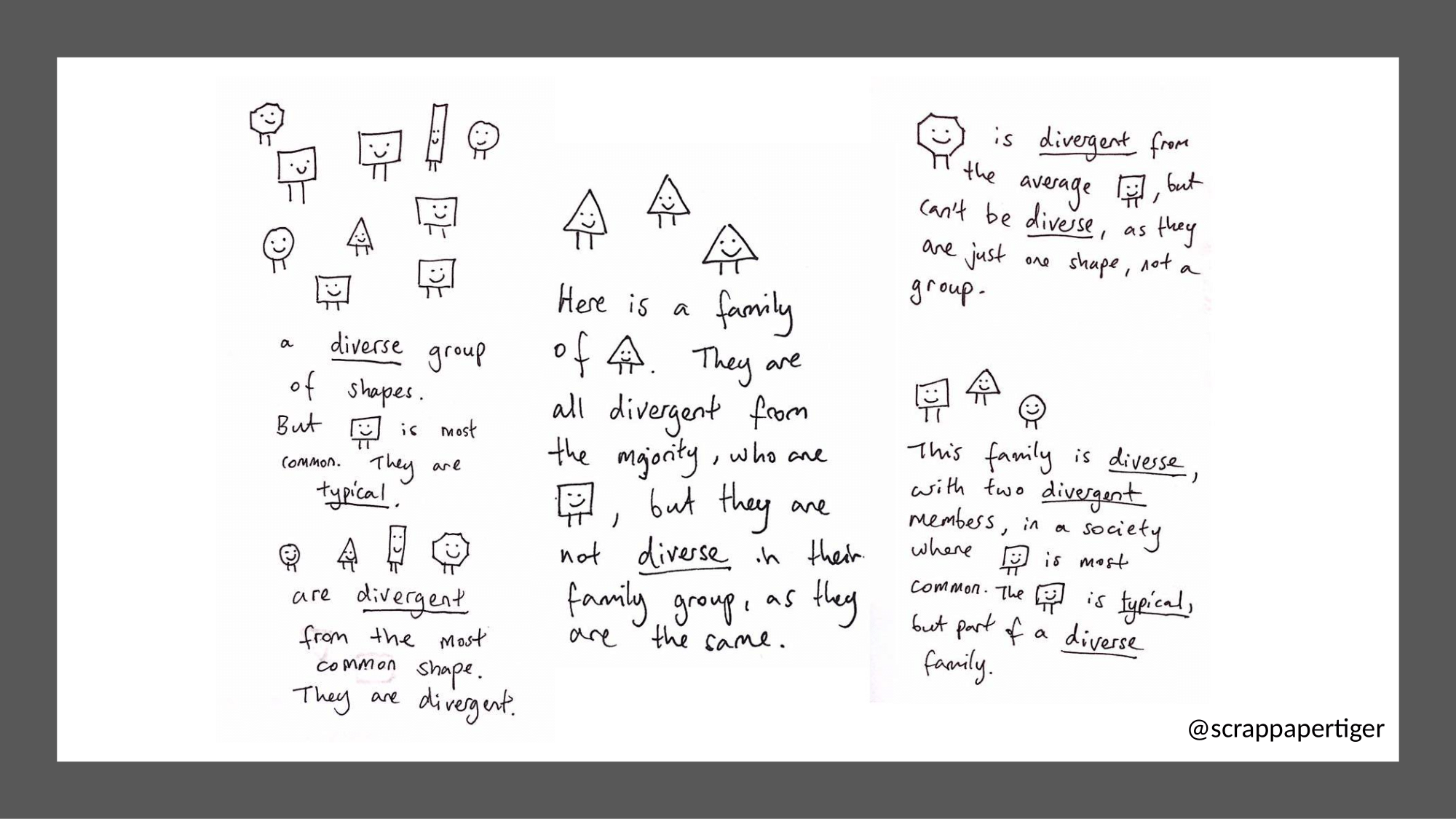The Basics of Neurodiversity

Key Terms
"The phenomenon of variability between people in how our brains process information and therefore experience the world." (Salvesen Research Centre)
The University of Warwick has seen a large increase of students declaring a disability, the most common is specific learning differences. This toolkit has focused on the following conditions, but this is not an exhaustive conditions under neurodiversity.
Read More Here.
Neurodiverse Conditions
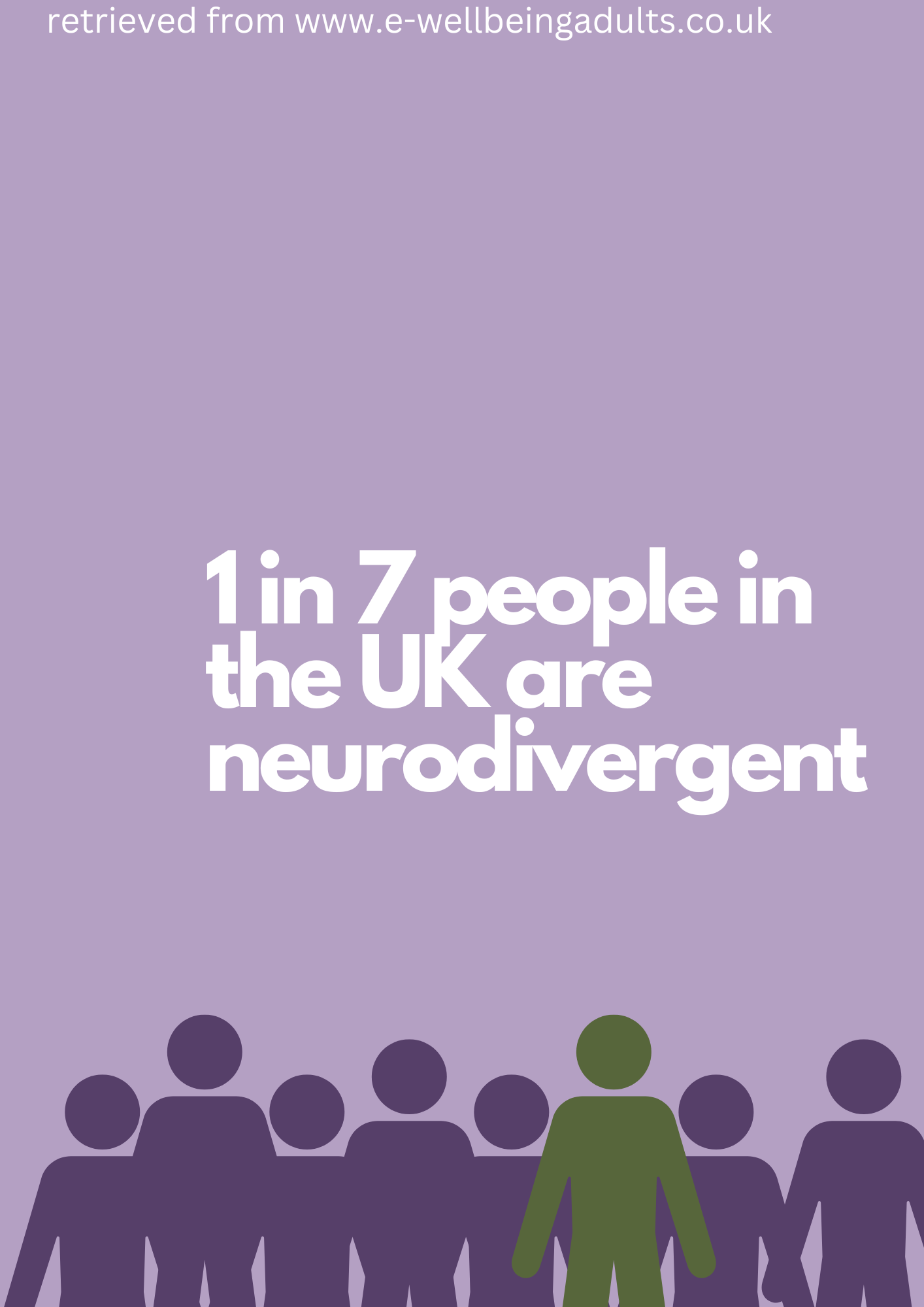
Autism Spectrum ConditionLink opens in a new window
Autism Spectrum Condition is a developmental disability that affects how individuals communicate and interact with the world (National Autistic Society).
As it is a spectrum condition, it means that individuals will be affected in different ways.
History of Disability & Disability Law
Model of Disability
Model of Disability refers to the progression of thought about disability within society.
The Medical Model negatively claims that those with disabilities must be ‘cured’, a very damaging and harmful viewpoint that perpetuates unhelpful narratives and instigates that those with disabilities have something ‘wrong’ with them that needs to be ‘fixed’, it denies the narrative and influence that societies views have over the idea of ‘disability’ (Areheart, 2008). The medical model is grounded in viewing disability in a negative way, that those with a disability are not viewed equally alongside able-bodied people (Retief, M., & Letšosa, R. (2018). This limited view of disability does not take into consideration the environment or conditions that a person is in (Kasser & Lytle 2005).
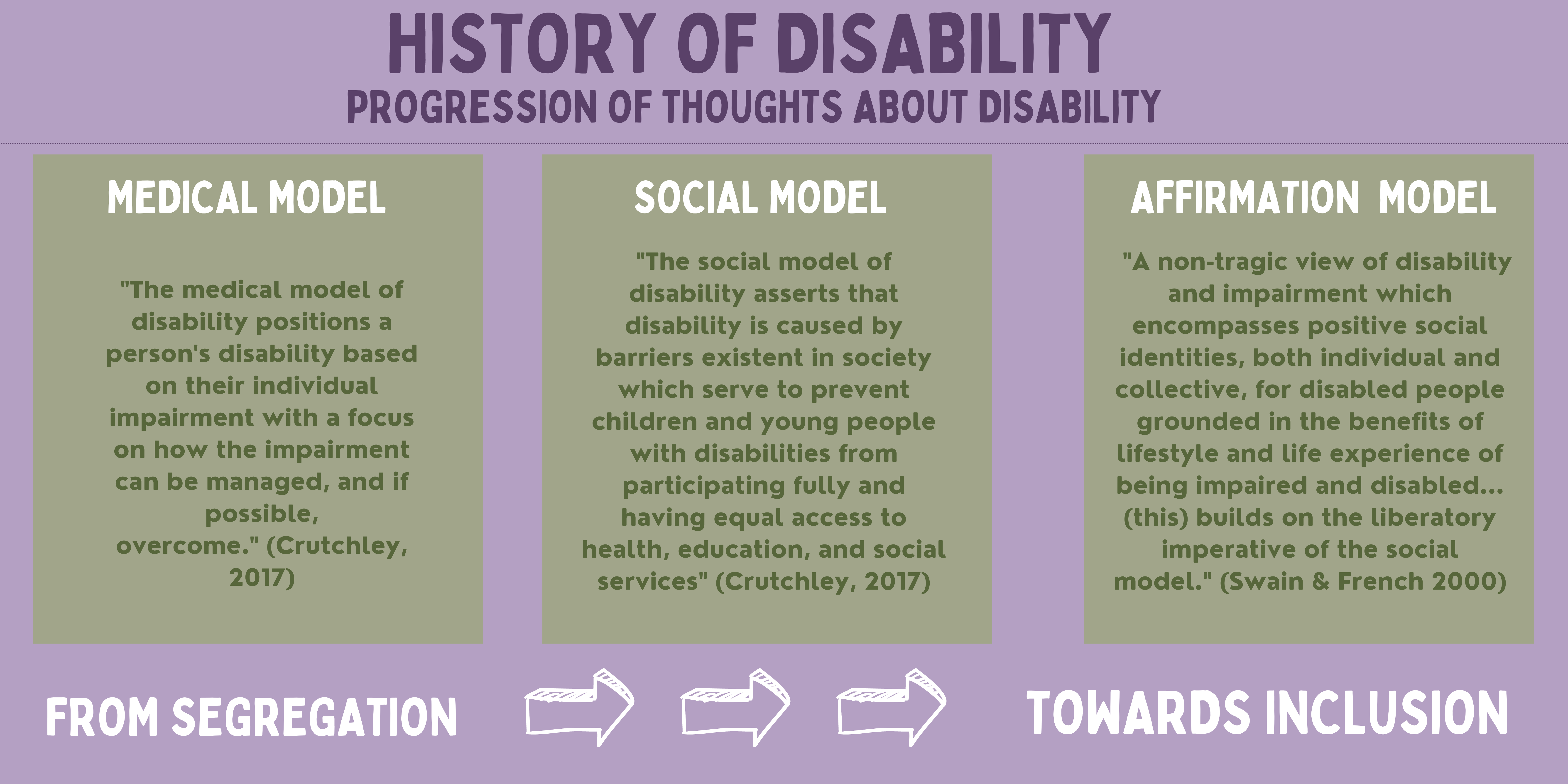
Equality Act 2010
You are disabled under the Equality Act 2010 if 'you have a physical or mental impairment that has a 'substantial' and 'long term' negative effect on your ability to do normal daily activities'.
Definition of disability under the Equality Act 2010
This means that disability is a protected characteristic and requires institutions, such as education, to have a legal requirement to make appropriate adjustments for those with disabilities.
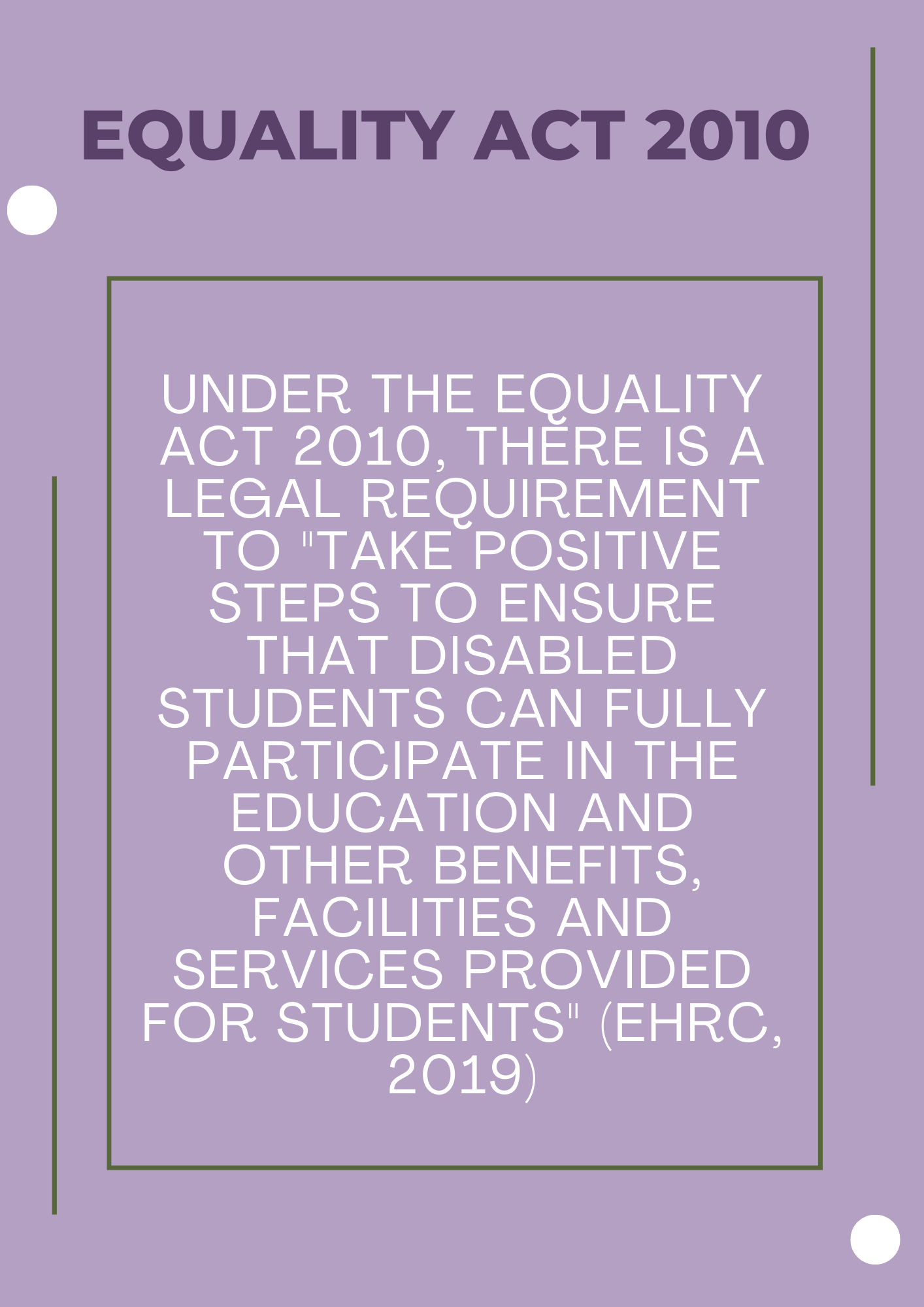
Identity and Intersectionality
Intersectionality
The lived experience of students with neurodiversity often means that they will face barriers when accessing education. It is important to recognise how these barriers may interact with other barriers students are facing simultaneously. It is important to recognise how other levels of privilege, characteristics, and discrimination may further exacerbate the experiences of those who are already marginalised. This can be in the form of sexism, racism, homophobia, and classism).
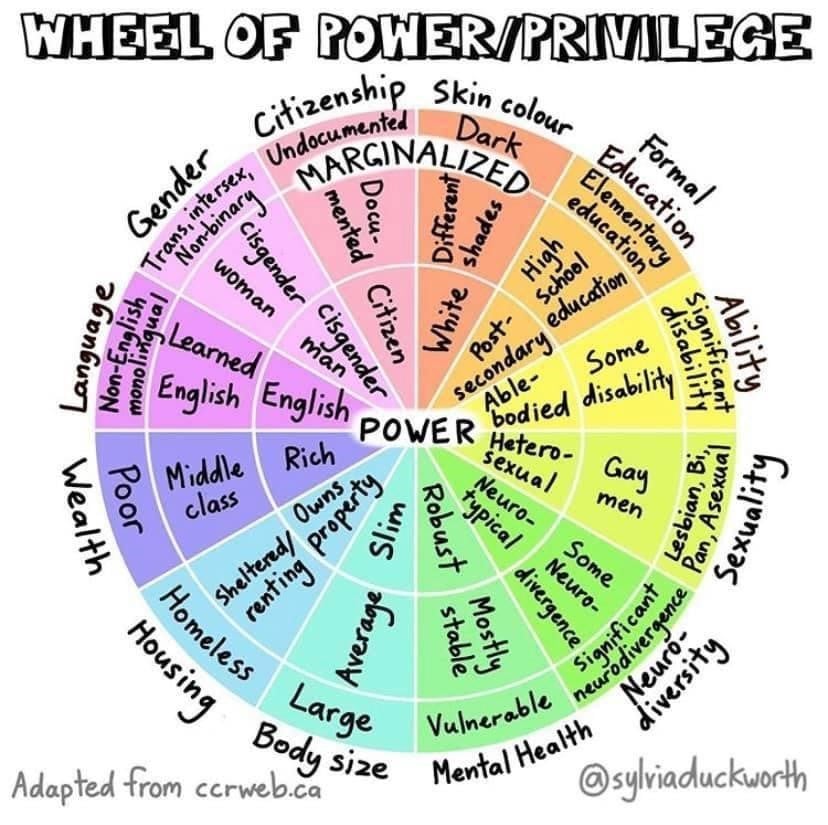
Intersectionality
Seyi, a graduate from the Univeristy of Lincoln recieved a diagnosis of dyslexia, dyscalculia and dyspraxia at University. Since then, she has been a strong advocate for intersectionality of neurodiversity and raising awareness.
Link to Seyi's Book: The Intersectionality of Being Black and Neurodiverse
Identity
Each student with neurodiversity will have had a different journey, emotional reaction, experience, and diagnosis that is individual. For example, a lot of students receive a diagnosis at University and this can be a stress-inducing time. How an individual responds to a diagnosis, or awaiting one, will be different.
This video was created by a student who has been waiting for an ASD diagnosis.
Co-Occurance
It is common for a person to have more than one condition. The University of Birmingham have written about the prevelance of two neurodivergences.
Although many neurodiverse conditions have a set diagnostic criteria, it is important to remember the complexity of the brain and that it is not always a set clear categorisation of conditions (Brown et al. 2023).
There are many shared risk factors and etiologies between disorders (Clark et al. 2017). On average, 1 in 4 adults are diagnosed with both ADHD and ASC (Lugo-Marin et al. 2019). Similarly, dyslexia and ADHD are also commonly diagnosed in one person (Peterson & Pennington, 2015). Research suggests that 52% of those with dyslexia also have characteristics of dyspraxia (Kaplan et al. 1998)
Language
The neurodiversity movement is associated with using inclusive language when talking about disability. It is personal preference as to whether or not a person uses first-language (e.g. a person with autism) or identity-first (an autistic person). It is best to understand what the individual prefers (Baumer, 2021).
Potential Common Experiences
Imposter syndrome is "the persistent inability to believe that one's success is deserved or has been legitimately achieved as a result of one's own efforts or skills". Neurodiverse students often feel out of place at university and may regularly struggle with imposter syndrome.

